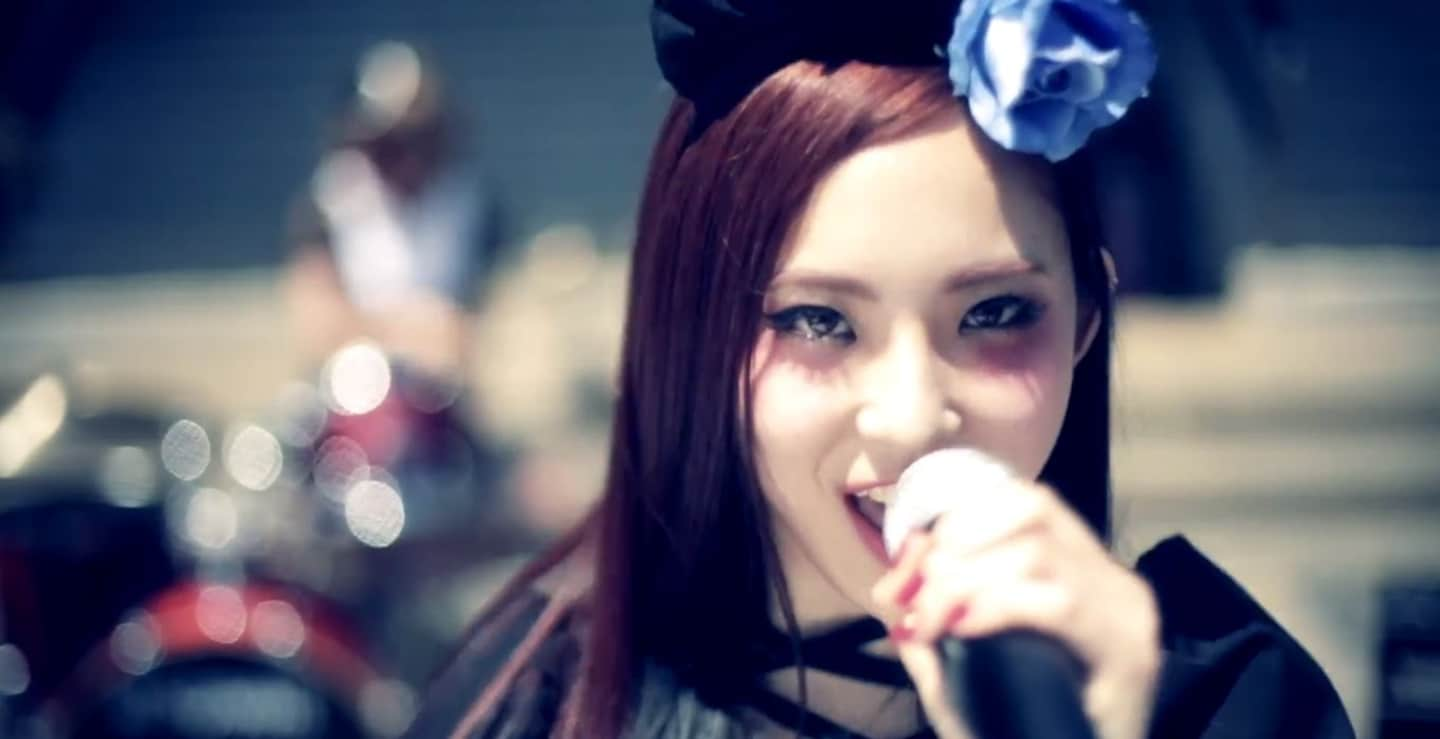4 Ways to J-Rock the Temple (Or Shrine)
While you won't see so much as a corner of a temple or shrine in a typical J-pop video, it seems that Japanese bands with an eye on going big abroad are keen to draw on Japan's most iconic architecture to instantly establish a visual message of who they are and where they're from. Here are four prime examples of how to J-rock the temple or shrine.
By Michael Kanert4. Ladybaby — Nippon Manju
https://www.youtube.com/watch?v=M8-vje-bq9c
Ladybaby's preposterously viral debut track, "Nippon Manju," is like a tourism promotion video gone mad. It all starts below the giant red lantern in the Kaminarimon Gate of Senso-ji Temple in Asakusa, Tokyo. We stick around in the temple's Nakamise shopping street just long enough to begin a four-minute litany of name-drops of just about everything you can think to see, do or eat in Japan.
The band, formed in 2015, was centered around Ladybeard, an Australian pro-wrestler/metal singer whose beard-and-pigtails gimmick has caught on like wildfire since he came to Japan after originating his act in Hong Kong. However, the girls and beard went their separate ways at the end of July 2016, with Rie Kaneko and Rei Kuromiya remaining on as a duo now dubbed The Idol Formerly Known as Ladybaby.
So what does "Nippon Manju" mean? Nippon is another name for Japan, and a manju is a confection with a bready exterior and something sweet like anko (red bean paste) inside. Don't get it? Neither do these guys!
3. Band-Maid — Real Existence
https://www.youtube.com/watch?v=9TkHpvaO09c
Band-Maid is a five-piece, all-female band signed to a subdivision of the industry-dominating Avex Group. Initially formed in 2013 as a four-piece, their look is based on hostesses at maid cafés—an image they play up by referring to their fans as go-shujin-sama and o-jo-sama, or "master" and "mistress," just like typical café maids.
Conceived by guitarist and vocalist Mika Kobato, who spent time working at a maid café, the cutesy affectation belies hard-hitting paired vocals, soaring guitars and relentless drums. The band's video for "Real Existence," the second featured song off their December 2015 album New Beginning, was shot in front of—and even inside—the main hall of Horinouchi Myohoji Temple in Suginami-ku, Tokyo.
When asked about their choice of venue in a JRock247 interview, Kobato noted that uniting these two images of Japanese culture (maids and temples) represents an intentionally "chaotic mix," while vocalist Saiki Atsumi added, "I think that it shows the contrast, which is our band’s concept, rather than a connection to the song. Plus it’s a setting that fits Japan." Filming on a sweltering day in summer 2015, it seems they attracted a lot of attention from the temple's patrons as well!
2. Babymetal — Megitsune
https://www.youtube.com/watch?v=cK3NMZAUKGw
How could we fail to mention Babymetal? These three queens of kawaii metal—essentially an amalgam of heavy metal riffs with J-pop idol vocals—have taken the world by storm since they formed in 2010. Their self-titled debut album, released in February 2014, ranked in at 187 on the U.S. Billboard chart—a rare feat for any Japanese band—and topped the iTunes Metal charts in the U.S., U.K. and Germany. They've played Paris, London, New York and more alongside the likes of Iron Maiden, Slayer, Megadeth and Metallica, and even opened for Lady Gaga on her 2014 “ArtRave: The Artpop Ball” tour.
Babymetal doesn't so much incorporate Shinto iconography into its videos as make it a central part of the act. The girls' backing band is called the Kami Band, or "God Band," while producer Kobametal (that's the only name he goes by) claims the name Babymetal came to him as a divine message, and that every course of action taken by Babymetal is revealed to him through communications from the heavy metal "Fox God," or Kitsune-sama.
Of particular note is the girls' signature kitsune hand gesture, which was born when the youngsters misinterpreted the traditional heavy metal sign of the horns during a photo shoot, putting their middle fingers together with their thumbs to make fox-like silhouettes.
The video for "Megitsune" has less to do with temples and shrines than with Noh, and features the girls performing on a Noh stage and wearing Noh fox masks—though Noh itself does ascribe to certain Shinto and Buddhist traditions, and the roof of the stage is based on that of a traditional shrine.
The video includes a nod to the actual Shinto fox god, Inari. From 1:42, you'll see a brief POV shot of someone running through a long series of vermilion torii gates, called senbon-torii (千本鳥居, "1,000 gates"). While this is reminiscent of the distinctive gates at Fushimi Inari-Taisha in Kyoto, the head of all Inari shrines in Japan, it's actually most likely the gates at Sanno Inari Shrine, a small subordinate shrine to Hie Shrine in Chiyoda-ku, Tokyo.
And what's a megistune? While it literally means female fox, it also refers to a crafty woman. In Japanese legend, the fox is seen as a trickster and shape-shifter. Similarly, female fox spirits often appeared in Noh theater, tricking haughty warriors and protecting those they took a fancy to or to whom they owed a debt.
1. Band-Maid — Don't Let Me Down
https://www.youtube.com/watch?v=0YGwUhg2XNk
With Band-Maid stating that their goal is global expansion, it seems they've emblazoned their banner with traditional Japanese iconography. The quintet's third featured video from New Beginning kicks off with a shot of shoji sliding doors before cutting to vocalist/guitarist Kobato running through the stone lanterns on the approach to Ueno Toshogu Shrine (Incidentally, while these lanterns are generally called ishi-doro, this specific type are called kasuga-doro after Kasuga Grand Shrine in Nara).
Kobato then heads off to Tokyo Tower (editing implies it's nearby—it's not!) before those shoji doors open to reveal a background embellished with a classical vermilion bridge and a five-story pagoda, or goju-no-to, backed by the imposing face of Mount Fuji. You couldn't scream "Japan!" more loudly if you added Gozilla and a Gundam to the mix. But they're not done.
After a few shots of Kobato running through Shibuya, Akihabara and a series of red torii gates at Hanazono-Inari Shrine back in Ueno Park, we return to find the quintet's backdrop accentuated by Kamakura's Great Buddha, a castle (which we can't quite make out because it's on fire!), and a big ol' torii gate (complete with shimenawa rope) just for good measure. You couldn't Japan harder if you tried!




